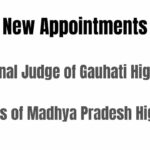“General Elections 2019- An Atlas” Released by Election Commission
General Elections 2019 Atlas: Chief Election Commissioner Sushil Chandra, Election Commissioner Rajiv Kumar, and Election Commissioner Anup Chandra Pandey released ‘General Elections 2019 – An Atlas.’
The Atlas contains all of the data and statistical information from this historic event. It includes 42 thematic maps and 90 tables that show various aspects of the elections. The Atlas also includes fascinating facts, stories, and legal issues about the Indian elections.
The Commission has been publishing a collection of election data in the form of narrative and statistical volumes since the first General Elections in 1951-52.
The 17th General Elections held in 2019 were the greatest democratic exercise in human history, with 61.468 crore voters casting ballots at 10.378 lakh voting places distributed across 32 lakh square kilometres of Indian land.
In Indian elections, electoral data is largely gathered by Electoral Registration Officers during the preparation of the Electoral Roll, as well as by Returning Officers during the election process. The Commission issued statistics reports in October 2019 based on electoral data provided by the Returning Officers of 543 Parliamentary Constituencies.
These comprehensive maps, in addition to contextualising the data, highlight election trends at multiple levels and identify their geographical and temporal settings. This Atlas acts as an educational and illustrative resource that brings to light the complexities of the Indian election process and allows readers to analyse trends and changes with the goal of better visualising and representing electoral data.
The Atlas highlights key features such as data from the 23 states and union territories where women outvoted men in terms of voting percentages; information on the largest and smallest parliamentary constituencies in terms of electors, candidates, and political party performance, among other parameters.
The Atlas shows elector statistics in many categories and through various comparison charts, such as the Elector Gender Ratio and electors in various age categories. The 2019 General Elections had the lowest gender gap in Indian election history. In the 2019 General Elections, the Elector Gender Ratio, which has been increasing since 1971 was 926.
In addition, the Atlas compares the average number of electors per polling station in different states during the 2014 and 2019 General Elections. In the General Elections 2019, the Election Commission of India set up over 10 lakh polling stations, with Arunachal Pradesh having the lowest electors per polling station (365).
Download General Elections 2019 eAtlas: e-Altas
Learn More
Link: Daily Current Affairs Download
Link: fdaytalk news

